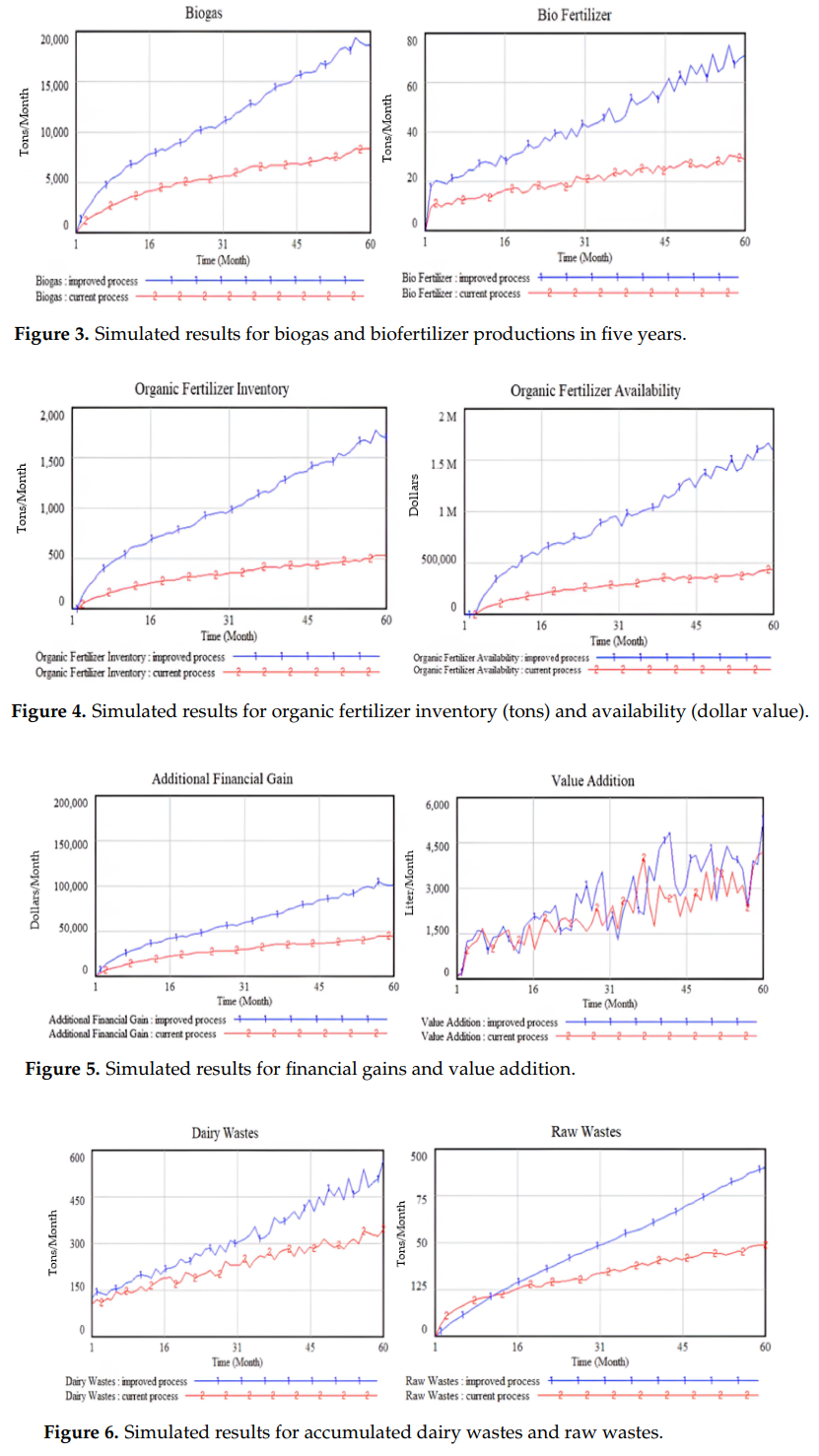The paper presents a case for integrating dairy waste into organic agriculture, However, a critical examination of the System Dynamics (SD) model reveals a fundamental flaw that severely undermines the quantitative results and, by extension, the study’s core conclusions.
The model’s output, specifically the claim that an “improved process” can generate “nearly 20,000 tons of biogas per month” from a single dairy operation, appears to be off by orders of magnitude, suggesting a critical error in model calibration or unit definition.
This figure is physically implausible. Biogas is a gas, primarily methane, with a low density. For context:
A large-scale agricultural digester processing hundreds of tons of manure might produce 20,000–40,000 cubic meters of biogas per day.
The paper’s figure of 20,000 tons per month is a completely different scale. Converting tons of methane to volume (assuming standard conditions) implies an output of over 27 million cubic meters per month, or nearly 1 million cubic meters per day.
This output is characteristic of a massive regional biogas plant, not a single dairy farm. This discrepancy points to one of two catastrophic errors:
A profound unit error in the model (e.g., mistaking kg for tons, or monthly output for daily output).
A complete miscalibration of the stock-and-flow parameters governing the anaerobic digestion process, rendering the simulation meaningless.
Since the entire quantitative comparison between the “current” and “improved” processes (Figures 3–6), including the dramatic projections for biofertilizer production and financial gains, hinges on this model, this error invalidates the paper’s primary evidence. The impressive graphs are likely artifacts of a broken model rather than valid projections of a sustainable approach.
Without a clear explanation of how these model parameters were derived and validated against real-world physicochemical constraints, the study’s quantitative findings cannot be trusted. The qualitative argument for waste recycling remains valuable, but the SD model, as presented, does not scientifically support it.


